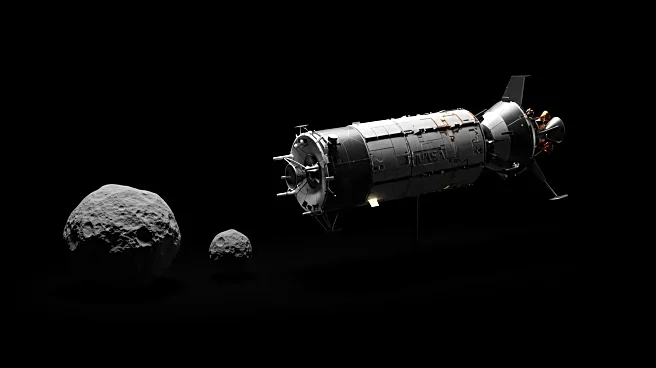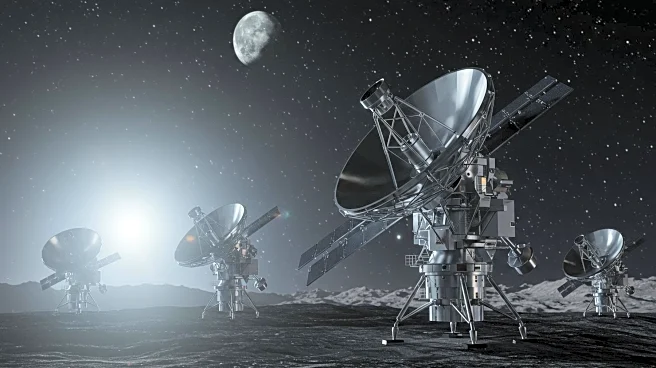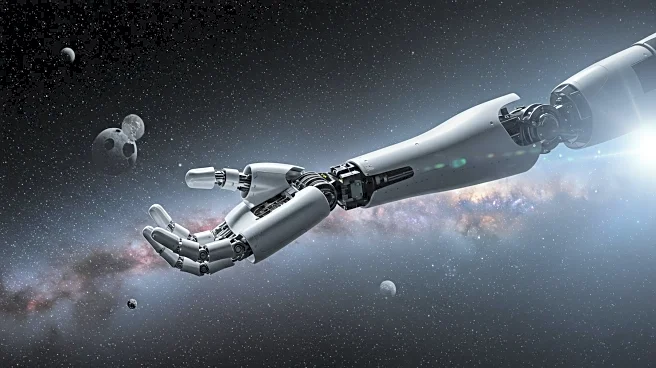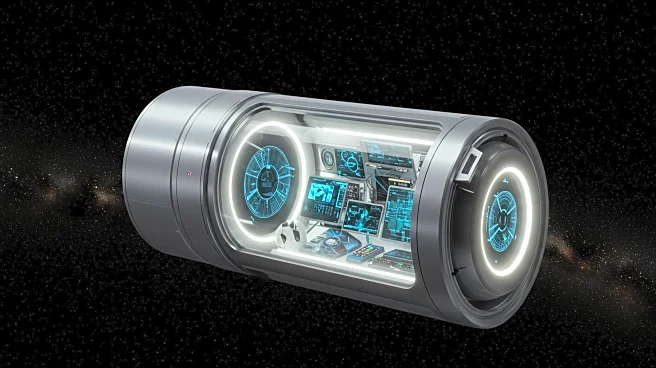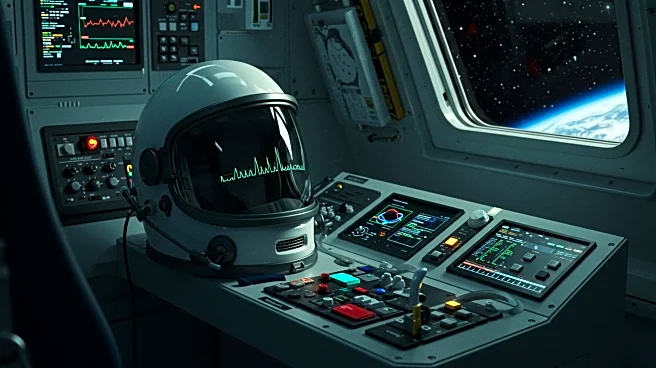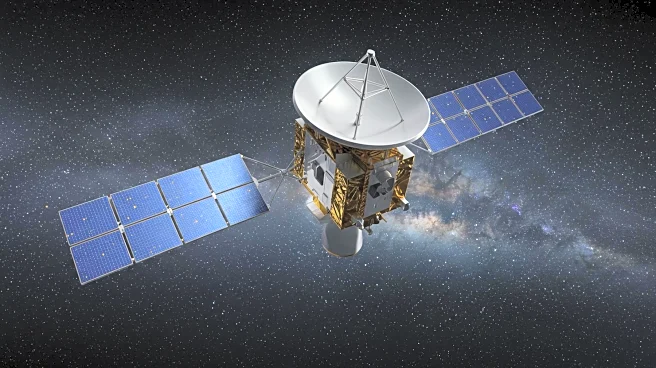What is the story about?
What's Happening?
NASA's Double Asteroid Redirection Test (DART) mission successfully demonstrated the ability to alter the trajectory of an asteroid through a high-speed collision. The mission targeted Dimorphos, a near-Earth asteroid, and involved a spacecraft intentionally crashing into it. The Italian Space Agency's LICIACube provided close-up images of the impact, revealing that approximately 35.3 million pounds of debris were ejected from the asteroid. This debris significantly influenced Dimorphos' trajectory, providing a stronger push than the spacecraft's impact alone. The mission's success highlights the potential for using small spacecraft to deflect asteroids, particularly those with a 'rubble-pile' structure similar to Dimorphos.
Why It's Important?
The DART mission is a significant advancement in planetary defense, showcasing a viable method for protecting Earth from potential asteroid threats. By demonstrating that a small spacecraft can effectively alter an asteroid's path, the mission provides a blueprint for future asteroid deflection strategies. This capability is crucial for mitigating risks posed by near-Earth objects, which could cause catastrophic damage if they were to collide with Earth. The findings also emphasize the importance of considering the debris plume's impact when designing future deflection missions, as it can enhance the effectiveness of the initial collision.
What's Next?
Following the success of the DART mission, researchers will continue to analyze the data collected to refine asteroid deflection techniques. Future missions may focus on different types of asteroids, particularly those with stronger, more compact structures, to understand how they respond to similar impacts. The insights gained from DART will inform the development of more advanced planetary defense systems, potentially involving larger spacecraft or multiple impactors to address a wider range of asteroid threats.
Beyond the Headlines
The DART mission also raises ethical and legal questions regarding the manipulation of celestial bodies. As asteroid deflection technology advances, international cooperation and regulation will be essential to ensure responsible use of such capabilities. Additionally, the mission contributes to our understanding of asteroid composition and behavior, offering valuable information for scientific research and exploration.
AI Generated Content
Do you find this article useful?
